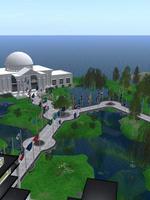
Should Government Reorganize Itself? (Part IV)

When Vice President Gore’s reinventing government team was being formed in the early 1990s, he encouraged it to not focus on reorganizing agencies and programs, but rather to fix what’s inside the agencies. He also advocated the creation of “virtual agencies.” At the time, no one really understood what he was talking about, but today – with the technologies now available – it is really possible.
Practical experiences with structural reorganization efforts, such as the creation of the Department of Homeland Security, show that co-locating agencies and missions isn’t enough. Leaders need to look at how various individual programs and services – not just agencies -- work with each other. And this may not require structural reorganization to accomplish.
Like Gore proposed almost two decades ago, more public leaders believe this can be done by using a virtual approach. A “virtual” reorganization would focus more on processes than on structure. It would focus less on agencies and programs and more on services and results. It would be based on the collaborative use of networks of services, organized around the intended customers, and a governance system organized around results.
Chris Mihm, GAO’s managing director for strategic issues, suggests in an article for The Public Manager that using “results mapping” might be one approach to create “a flexible and living organization chart for a virtual organization.” This approach shows analytic and program relationships, and is more descriptive than operational. Mihm says that results mapping means “a virtual organization chart places the intended result in the center and then displays the related initiatives and programs from the organizations that contribute to the achievement of that result.” He concludes: “Moving boxes around can be part of the solution, but . . . creating and sustaining virtual organizations will lead to far more dramatic improvements in government performance and results.”
Looking Beyond Structural Reorganization
There are at least half-dozen virtual approaches that could be used in lieu, or alongside, traditional reorganization approaches:
- Create national strategy plans. This approach was used over the past decade for targeted, national issues such as responding to cybersecurity challenges and the pandemic flu. It used a “portfolio” approach to mixing and matching related programs and services, similar to what Mihm describes, above.
- Designate cross-agency task forces. This approach is widely used across government, but these are used to coordinate and cooperate (such as around food safety) and not so much to co-deliver services and results.
- Designate lead officials. This is the approach is embedded in the new Government Performance and Results Act amendments. It is currently being piloted in 14 “cross-agency priority goals.”
- Increase use of shared mission-support services. When agencies share common support services -- such as workforce management, contracting, training, and payroll – it makes it easier (and less expensive) to work together collaboratively.
- Integrate front-line service delivery. This approach is being used in other countries to delivery social services, such as Service Canada and Australia’s CentreLink. However, it requires the authority to harmonize mission-related standards and processes across agencies.
- Continue to foster use of informal mechanisms. Many federal agencies, especially at the working level and in the field, collaborate informally. They can align their goals toward common outcomes, or they can use interagency agreements (often called memorandum of understanding) to define how they will work together.
While each of these collaboration mechanisms has been used successfully in recent years, they tend to be incremental in approach and have not been applied on a large scale. The political demand these days is for large-scale rethinking of how government is organized. So are there other models, beyond the structural and virtual reorganization approaches?
Next: Should government use Legos to inspire its reorganization approach?
0 comments



